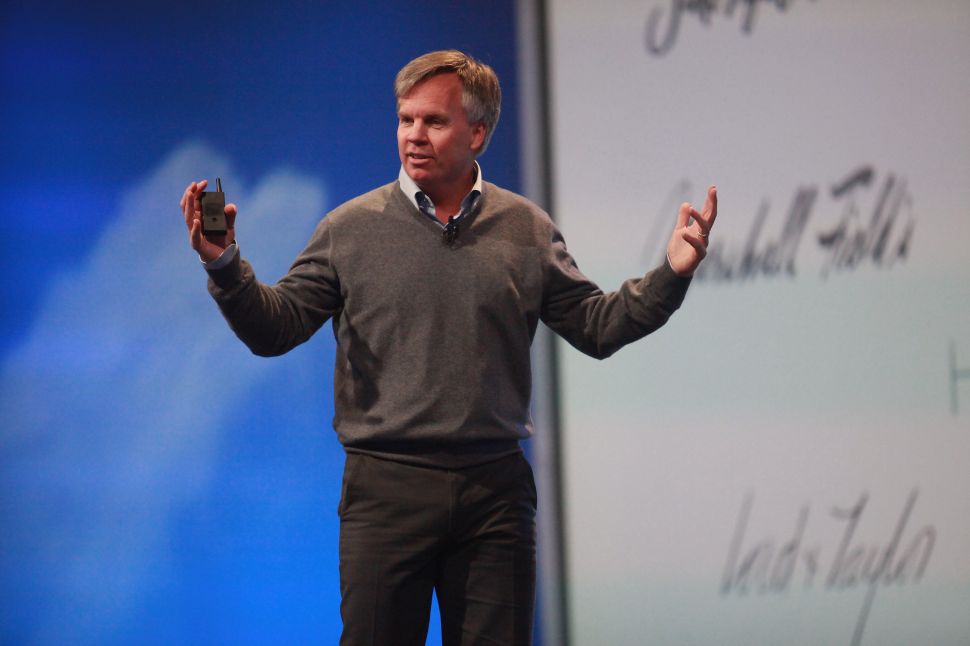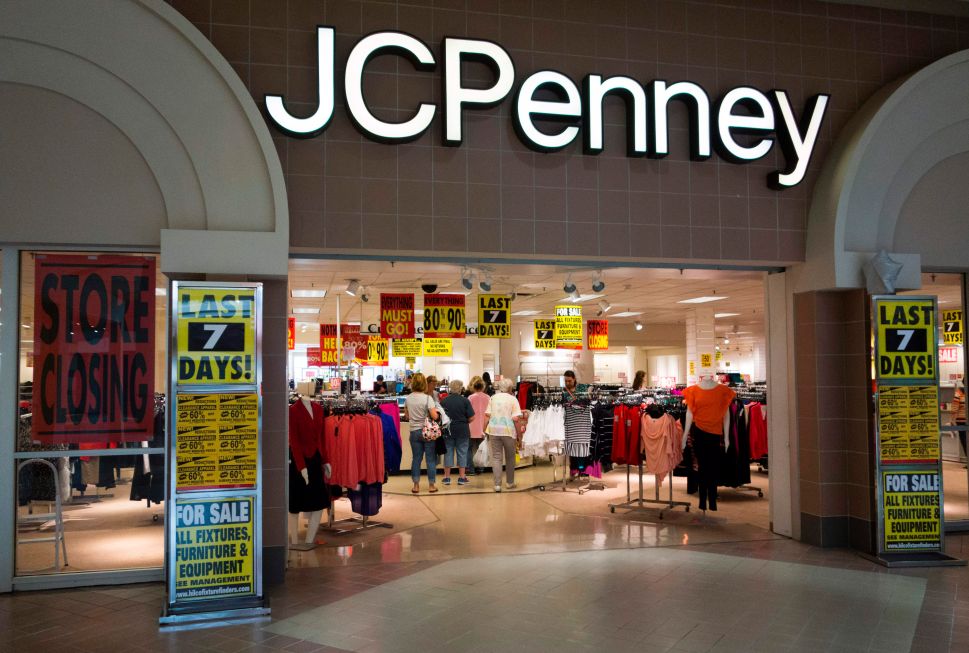
Of all the events in retail over the last 100 years, few have generated more press and opinions than the story of Ron Johnson’s tenure as CEO of J.C. Penney. I have written multiple articles about J.C. Penney and Johnson with most of my comments about Johnson being negative. Since departing J.C. Penney, Johnson has been on a quest for redemption.
Many people will never forgive Johnson for what he did to J.C. Penney. However, has the time come to listen to Ron Johnson? To understand the Ron Johnson of today, we must first revisit the story of Johnson at J.C. Penney—arguably the biggest retail disaster in history.
The Visionaries
The downfall of J.C. Penney began on October 7, 2010, when investors Steven Roth, head of the real estate investment trust Vornado, and Bill Ackman, the head of hedge fund Pershing Square Capital Management, teamed up to buy more than 26 percent of J.C. Penney’s stock.
Subscribe to Observer’s Business Newsletter
Roth and Ackman were convinced that J.C. Penney—despite that fact that its revenue had dropped from $20.2 billion in 2007 to $17.8 billion in 2011—could be turned around. The stock that was trading at $32 could easily become a $60 stock if J.C. Penney implemented a strategy to transform the company.
Instead of attempting a hostile takeover, Roth and Ackman chose to reach out to Myron Ullman III, CEO of J.C. Penney, to discuss their vision for a new and improved company. Ullman had a past relationship with Roth and agreed to listen. Ullman not only listened to what Roth and Ackman had to say, Ullman invited each to join J.C. Penney’s Board of Directors.
When Ullman was injured in a car accident, discussions changed from Ullman implementing the strategy proposed by Roth and Ackman to finding a retail executive capable of replacing Ullman. Ullman recommended Ron Johnson, a former Target executive. Johnson had also been recruited by Applet o design and run its Apple (AAPL) Stores.
Johnson expressed interest in the position, and he spoke positively about the potential for J.C. Penney to grow. J.C. Penney announced in June 2011 that Ron Johnson would become CEO starting in November. Johnson, who had an idea for a new kind of retail store, was about to get the chance to make it a reality.
Ron Johnson and the Destruction of J.C. Penney
The Johnson era at J.C. Penney will go down in history as one of the most destructive reigns by any CEO at any company—ever.
I won’t outline everything that went wrong for J.C. Penney under Johnson’s leadership as CEO here. (To learn all of the details, read Jennifer Reingold’s excellent article, “How to Fail in Business While Really, Really Trying.”)
At a high-level, Johnson’s strategy focused on several key areas:
- End the use of constant markdowns on price and the reliance on coupons to generate store traffic. Instead, Johnson wanted to offer customers easy-to-understand “fair and square” pricing.
- Turn J.C. Penney stores into a retail destination by opening as many as 100 separate boutiques filled with branded merchandise inside each J.C. Penney store with a town square in the center.
- Reduce the focus on private label brands, even though the brands generated 50 percent of sales and billions in revenue for the company.
This strategy was radically different than the operating model J.C. Penney had been using for years.
Johnson believed he could create a better customer experience for J.C. Penney’s core customers while attracting new customers to the stores. Attracting new customers was exactly what J.C. Penney needed. Johnson’s idea of opening 100 boutiques, although flawed in my opinion, had merit.
I believe a better strategy for the company would have been for Johnson to identify a small number of strategic brands and introduce them slowly within the stores. The goal should have been to complement the company’s proven private-label brands with branded merchandise.
But the board at J.C. Penney wanted a CEO to transform the company, and Johnson’s plan was transformative.
In a hurry to prove that his vision for J.C. Penney was the right one, Johnson hired a team of outsiders to fill critical senior-level positions; terminated more than 19,000 employees; ended the use of discounts; and ordered that stores be revamped without testing whether any of his ideas would resonate with customers.
After all, what could go wrong? Johnson had created the Apple Store, and it was the most profitable retail store in the world.
Sixteen months after becoming CEO, Johnson was fired by the same board that had hailed him as a savior of the company. In 2012, at the end of Johnson’s first year as CEO, same-store sales fell 25 percent resulting in a $4.3 billion decrease in revenue. The company recorded a $1 billion loss and the stock fell to $18.
Customers had abandoned J.C. Penney in droves, proving that Johnson should have first tested his ideas before implementing them company wide. Johnson’s strategy had driven away the company’s core customers and failed to attract the new customers it so desperately needed.
No other CEO in the history of retail generated worse results in such a short period as Johnson. Ackman and Roth sold their shares, losing hundreds of millions of dollars on their experiment with J.C. Penney.

In April 2013, Johnson was invited to speak at Stanford University. According to Johnson, the primary lesson he learned from his tenure as CEO was that he was a “terrible fit” for J.C. Penney.
A terrible fit? I disagree.
Johnson designed the strategy, and he had complete command and control over how the strategy would be implemented and executed. He hand-picked executives from outside the company to fill senior roles and the executives reported directly to him. He had full support of the board including Ackman and Roth.
Johnson was also an experienced retail executive, having begun his career at Mervyn’s and eventually moving to Target. He knew exactly what kind of a company J.C. Penney was and he understood the type of customer who shopped at J.C. Penney. Johnson understood retail in detail.
When Johnson moved to Apple, Steve Jobs was his mentor. Johnson knew the difference between the euphoria created when Apple released a new product and the joy a mom felt saving $5 on a blouse picked from a clearance rack.
Fit had nothing to do with Johnson failing at J.C. Penney. He failed because he chose the wrong strategy. Ron Johnson failed because of Ron Johnson.
Ron Johnson, Retail Guru
Although I am critical of Johnson for his tenure as CEO of J.C. Penney, I believe Johnson deserves credit for two things since departing the company. First, Johnson co-founded a company called Enjoy, a mobile retail store “that comes to your door” delivering smart devices and other technology and then ensures customers know how to use the devices. I have researched Enjoy, and I think very highly of the business model. I anticipate that Best Buy, Walmart or maybe even Target will eventually acquire Enjoy if the company continues to grow. Job well done, Mr. Johnson.
Second, Johnson has become something of a retail guru, making coherent arguments that accurately describe the current state of retail and what we can expect in the future. In fact, I believe Johnson is arguably the best retail analyst in the business and among the brightest minds in retail. For example, in this video, Johnson makes the argument that Walmart and Target have done an excellent job of investing in digital, growing online sales by double digits, and creating an exceptional retail store experience. Johnson’s comment that “Amazon (AMZN) is the one who should be afraid of sleeping at night” because of the improvements made by retailers to better compete against Amazon may prove to be prophetic.
Johnson also recently made statements in this excellent, and I do mean EXCELLENT video that over the next decade, “Amazon will add more square footage than any other retail strategy.” I have made similar predictions about Amazon adding more retail square footage in a series of articles. Most recently, I made the argument in this article that Amazon could make multiple retail acquisitions as well as open as many as 2,000 or more grocery stores and open between 3,000 to 5,000 Amazon Go stores. Johnson also provides additional commentary on retail that is well-worth listening to.
A question I am often asked is this: Should Ron Johnson be given a second chance at being a CEO of a retailer? One can assume that Johnson wants another chance to be a CEO at a large retailer, however, Johnson’s failure was so public that I don’t believe it’s realistic to think Johnson will get the chance.
My advice to Johnson is to stay focused on Enjoy (you have something special). Selfishly, I hope that Johnson keeps recording videos as I learn something every time I listen to Johnson speak.
What’s Next for J.C. Penney?
In 2019, J.C. Penney is in a world of hurt. The impact of Ron Johnson still reverberates. The CEOs that followed Johnson all failed to do anything materially to stem the decline in sales. J.C. Penney hired its current CEO, Jill Soltau, in October 2018 and already Wall Street and analysts are predicting more pain for the beleaguered retailer.
My opinion of what J.C. Penney must do hasn’t wavered since Johnson left the company. J.C. Penney cannot survive on its own, and anyone who believes otherwise isn’t willing to accept the new reality of retail. The fact that J.C. Penney has engaged McKinsey and has hired former McKinsey consultants means nothing. Substitute the word ‘McKinsey’ for ‘Mighty Mouse’ when you watch this video and that will give you my opinion of McKinsey’s ability to turn around J.C. Penney or any other retailer.
J.C. Penney has been in a free fall in terms of its revenue and stock price. The company generated $20 billion in revenue in 2007, yet based on its Q1 2019 earnings, the retailer could conceivably generate only $10 billion or less in revenue in 2019.
The challenge for J.C. Penney is that it has lost relevance across the board, resulting in a significant decrease of customer traffic within its stores. I do not believe any CEO can turn around the company as there are too many negatives; primary among them is the fact that J.C. Penney has $4.1 billion in debt. A key reason why J.C. Penney is trying to reduce inventory levels is to free up working capital. Nice try. I agree with the strategy, but it’s not enough. Heavy debt and a lack of cash eliminates any possibility of trying to create a new and improved J.C. Penney on its own. That ship has sailed.

I believe the only way J.C. Penney can survive is to be acquired, but its debt load greatly reduces such a possibility from becoming a reality. However, in the event that J.C. Penney could be acquired, the following companies are best suited to make the acquisition. I am not convinced anything that I list below will come to fruition.
►Best Buy Acquires J.C. Penney
Best Buy can open expanded showrooms inside J.C. Penney stores, displaying electronics and appliances to demonstrate the value of the connected home. Best Buy selling appliances in its stores isn’t the best use of space. Best Buy can transition appliances and installation services to J.C. Penney. I wasn’t impressed with J.C. Penney’s appliance program, but I’m confident that Best Buy and J.C. Penney would be able to create a much better customer experience. Gaming and e-sports should be a major area of focus for Best Buy and J.C. Penney. This will attract more Generation Z and Millennial customers without alienating the core market. Best Buy and J.C. Penney have the potential to create something special, but it will require lots of work.
►Amazon Acquires J.C. Penney
Amazon is investing heavily in furniture and home furnishings and will soon be selling appliances powered by its voice-activated technology, Alexa. Although I don’t believe Amazon has to acquire a physical retailer to compete in furniture and home furnishings, acquiring J.C. Penney would allow Amazon to introduce its many private label brands inside J.C. Penney stores.
Amazon is an e-commerce company that understands the strategic value of physical stores, hence the acquisition of Whole Foods. It is plausible Amazon could acquire J.C. Penney to expand its physical store footprint and its retail ecosystem.
►Wayfair Partners With J.C. Penney
Wayfair could partner with J.C. Penney to open showrooms of furniture and home furnishings within J.C. Penney stores. J.C. Penney could open interior design centers for the home and leverage augmented reality/virtual reality to help customers identify the optimal furniture style and pieces for their home within their budget. With a market cap of nearly $11 billion, Wayfair could acquire J.C. Penney under the right circumstances. Wayfair doesn’t need a physical store presence to succeed. However, if it was able to acquire J.C. Penney or partner with the company, there is value in Wayfair creating an omni-channel engagement with customers. Amazon has already proved the value of physical stores to an e-commerce retailer.
►Lowe’s Acquires J.C. Penney
In a twist of irony, Bill Ackman, yes, the same Bill Ackman that took a stake in J.C. Penney, has taken a stake in Lowe’s. Even more strange is that Lowe’s hired J.C. Penney’s former CEO, Marvin Ellison, to become the CEO of Lowe’s. Ackman is pressuring Ellison to hire new executives and implement a new strategy to make Lowe’s a more competitive and profitable company. Sound familiar? I can make an argument (albeit a weak argument) that acquiring J.C. Penney will allow Lowe’s to expand its retail ecosystem and increase its ability to meet the needs of customers for furniture, home furnishings and general merchandise all under a single banner.
If Lowe’s acquires J.C. Penney, Bill Ackman will have the last laugh after all.

